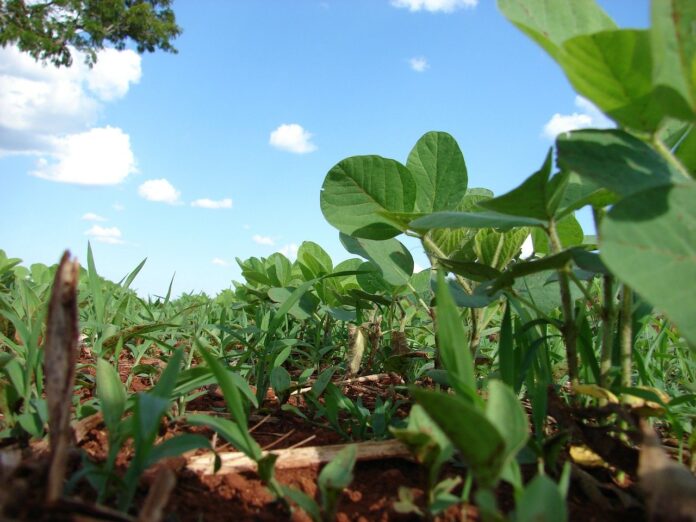The most interesting thing for farmers to watch these days is not the latest movie, but the “big picture” of ag economy, being played out all over the world.
A couple of news feeds on my phone — thank God for 2023 technology — have me thinking about the macro-market that is moving our prices and will continue to do so. First, there were a couple of articles about the spec funds getting shorter on corn and wheat and longer on soybean futures. There are reasons for that, and they are mostly about world production, not our own.
Then came an article on AgWeb by Katie Humphreys in which she dropped some statistics about the growth of corn and soybean acres in South America. I found it interesting — the kind of “interesting” that makes me glad my farming days are over.
The U.S. Department of Agriculture reports that will come out Dec. 8 will give us numbers that could fit with our projections, and our prices, or there could be surprises. We are getting the World Agricultural Supply and Demand Estimates and the Crop Production Report.
I am a little confused about the second one because I thought we normally skipped that in December and waited for the January report, which is referred to as the “inventory report”. After all, we should know what there is in the country by then.
The AgWeb story is led by a picture of a John Deere 24-row planter. That is probably a hint that even though we may think we have production advantages over the Brazilians, we don’t. They have access to the same technology we do. And, the record shows that they are now producing the same bushels per acre we do. It also shows that their share of the world market is increasing.
Competing with Brazil
In 1974 Brazil passed China to become the second largest producer of soybeans in the world, after the U.S. Since then they have passed us in the volume of soybeans exported since a high percentage of their crop goes onto water. And, now they have passed us in the amount produced. In the last 10 years, Brazil has gone from producing 10% fewer soybeans than the U.S. to producing 45% more! Most of that has come from increasing their acres.
To an extent, we have ourselves to blame for this. Because of drought in this country, soybean prices went up in 1973. In response, instead of letting the American farmer cash in on the prices, even if the crops were poor, our government put an embargo on soybeans. This was a serious matter to the Europeans, who had mostly used American beans in their products. It was a more serious matter to the Japanese, who ate the soybeans.
One reaction to the embargo came from the several thousand Japanese in Brazil. Japanese money was used, sometimes through the resident Japanese, to develop budding soybean farming, which then exploded.
A smaller, but similar problem comes with corn. Brazil’s corn production has increased 40% in the last decade, according to the AgWeb article. So, they are competing with us for the world market share of corn, too. Adding to the problem for us is their ability to plant a second crop after soybeans, especially in the northern latitudes of their country. This “cerado” crop is getting bigger, although it is off this year because of dry weather that limited the planting until late.
Prices
The current prices are being jerked around by instantaneous reactions to foreign news. Most of last week the markets were weak for corn and wheat. We made new contract lows at a time when seasonally we normally see some gains, right after harvest. From now until January, the elevators try to buy grain to fill bins. When January comes, they see an increase in farmer “tax planning” sales and don’t have to work so hard to originate grain.
Last week, the soybeans were actually going up. That stopped Dec. 4 when news spread that South America was getting generous rain where they needed it. The beans bounced as much as 18 cents a bushel. The corn just stopped going down.
Last week saw some big changes in speculative fund positions. The funds increased the size of their short positions in corn and wheat. They decreased the soybean positions.
The Commitment of Traders Report reported 13,000 additional contracts short for funds, to a position of 224,500 contracts, a near-record position. The funds shorted wheat another 7,000 contracts to a position in Chicago wheat of 124,007 contracts short.
The soybeans, however, went the other way. The funds increased their net long by 17,600 to a position of net long 34,700 contracts. That is not a huge soybean position, but it is notable because it is the reverse of the corn.
Some of the reasoning for the short corn/long soybean spec is in current thinking about the long-term supply of the crops. Much of that will be confirmed or denied by the USDA reports coming out Dec. 8.
The trader guess for corn carryout (the amount left over in bins Aug. 31) is that it will be reduced by 2.8 million bushels. If true, and if the market is not trading a carryout like this now, prices could improve a little after the report.
The soybean carry is thought to drop by 2.8 million bushels to 242 million bushels. This is a very low supply, which probably means we import soybeans from South America into our southeast livestock markets to crush for soymeal. But, this is just a guess until Dec. 8.
What is known is that from now until you stop selling grain, South American weather, planting and production will have a bigger impact on our prices than ever before.













